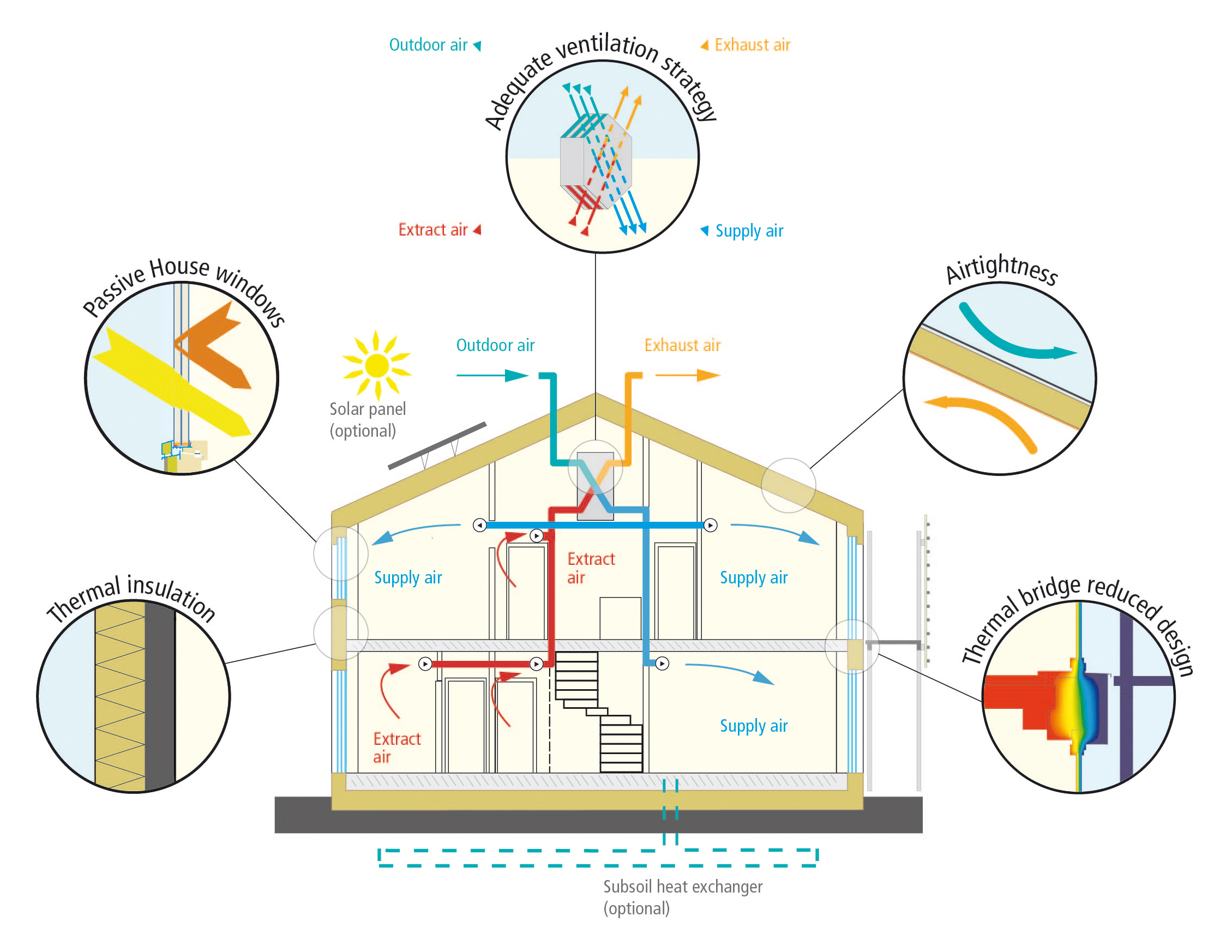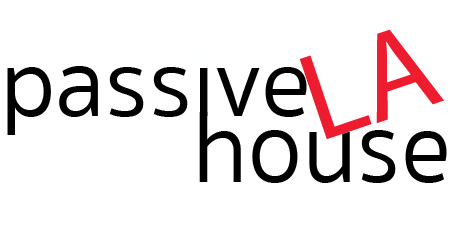
The Five Principles of a Passive House
Image Credit: Passivhaus Institut, Passivhaus section en, CC BY-SA 3.0
Principles of a Passive House
Passive House (from German: Passivhaus) is a collection of standards, requirements, design principles, recommendations and best practices with the objective to attain a high performance building, comfortable and, at the same time, affordable. Passive House is a holistic approach to building design and construction that prioritizes energy efficiency, thermal comfort, and indoor air quality. By combining meticulous insulation, airtight construction, high-performance windows, and advanced ventilation systems, Passive Houses minimize energy consumption and drastically reduce heating and cooling costs.The Passive House follows five fundamental principles to achieve a high energy performance: 1) super-insulated thermal envelope, 2) high-performance windows, 3) mechanical ventilation with heat recovery, 4) high level of airtightness, and 5) thermal-bridge-free detailing.A building designed and built to Passive House standards will results in multi-faced benefits, to include:
- Energy efficiency: Compared to standard buildings, a Passive House typically achieve around 90% reduction in heating and cooling related energy savings, and over 75% when compared against an average new building.
- Comfort Living: Because of the inherent design aspects that address air-tightness, super-insulated building envelope, high efficiency windows and exterior doors, and attention to eliminate/reduce thermal bridges, the temperature inside a Passive building is very uniform and comfortable. The thermal stratification, which is the temperature differences between floors or rooms, and hot/cold spots found in a conventional building are essentially eliminated, reaching an unmatched level of comfort and enjoyment while living in the house.
- Health Living: The ventilation system in a Passive House provides a continuous supply of fresh and filtered air (air is never recirculated), removing Volatile Organic Compound (VOC), pollutants and carbon monoxide from inside, eliminating stale air and concentration of humidity, thus achieving a superb indoor air quality, as reflected in the Indoor Air Quality (IAQ) index typically found in a Passive House building.
- Sustainability: A Passive House does not require large heating and cooling systems found in cold and warm climate zone buildings. In fact, little energy is required to maintain the internal temperature to comfortable levels.The design principles aim to a finish building to be less reliant on the local grid and to focus on renewable energy.If combined with the building electrification with the use of solar photovoltaic panels, a Passive House building routinely reduces operational carbon emissions by 90%. Supplementing the purchase of renewable energy for the remaining energy requirement, a Passive House can totally eliminate the operational carbon emissions.A Passive House is a sustainable alternative to conventional construction
- Affordability: Let me say this first: a Passive House has higher upfront costs. This is usually true for any purchase where the long term operational costs (use and maintenance) offset the initial cost (i.e. electric cars, appliances, electronics, etc.). In light of the rising cost of energy, the reduced operational costs for heating, cooling and ventilation, a Passive House has significant lower operational cost, especially when combined with the building electrification. Although it may sound incredible and assertive to some, a Passive House is an investment with guaranteed returns on the long run!
By adhering to these principles, a building can significantly reduce its energy consumption and environmental footprint while providing superior indoor comfort and a healthier living environment.
Whether you’re a homeowner, architect, builder, or just curious about green living, and would like to discover how Passive House principles are applied, I would suggest starting with Passive House Institute (PHI). PHI is an independent research institute that has played an especially crucial role in the development of the Passive House concept. The site has extensive and comprehensive information on all aspects of Passive House, starting from the basic physical principles to the most complex construction details; it provides design guides, description and information on analytical tools and has a section on built projects, with numerous links to other resources.
